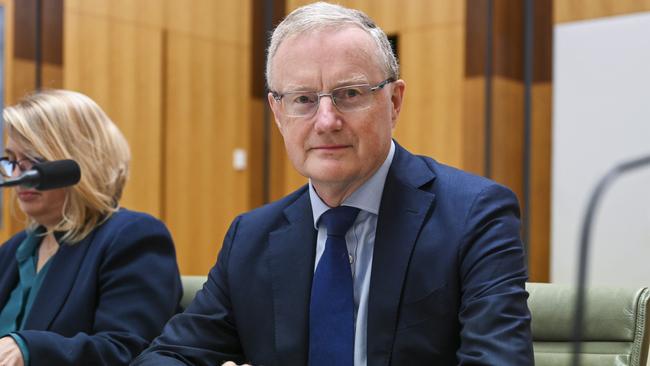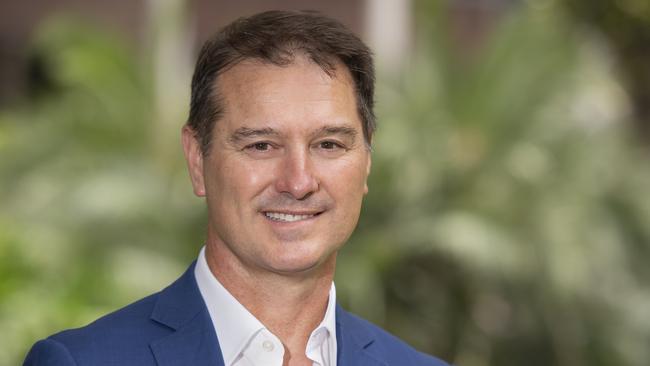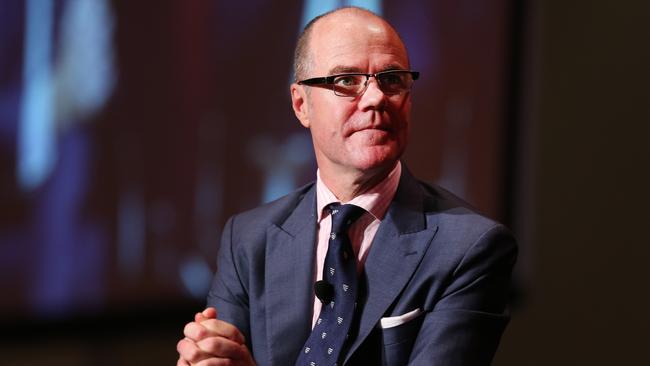RBA minutes suggests rates may have peaked but not everyone agrees
The RBA has strengthened its message that interest rates have probably reached their peak, although it’s possible more rises might be required.
At the risk of breeding complacency among borrowers and reigniting Australia’s housing bubble, the Reserve Bank has strengthened its message that interest rates have probably peaked.
In his post-meeting statement, RBA governor Lowe said some further increase “may” be needed to get inflation returns to target in a “reasonable time frame”. However, minutes of that meeting released on Tuesday merely said it was “possible” that some further increase “might” be required.
In other words, a further increase in interest rates is not very likely at all, according to the RBA.
It came as the wage price index for the June quarter showed wages excluding bonuses rose slightly less than expected: 0.8 per cent on-quarter and 3.6 per cent on-year. But a big rise in wages is expected in the September quarter after administered wage increases that started in July.

Labour force figures on Thursday are expected to show the nation’s unemployment rate rose to 3.6 per cent in July from a near 50-year low around 3.5 per cent in June, based on expectations of a 15,000 increase in jobs and a near-record labour force participation rate of 66.8 per cent.
Jobs growth accelerated in the first half of 2023 despite an aggressive lift in interest rates since May 2022, amid a surge in population growth that has contributed to a strong rebound in house prices.
In considering the case for another rate rise this month, board members noted that inflation might be “more persistent” than expected, and that the RBA’s forecast that inflation will be back within the 2-3 per cent target range in late 2025 was “conditioned” on a further increase in the cash rate.
They also considered the fact that Australia’s cash rate target is “notably lower” than policy rates overseas, despite inflation in Australia being “at least as high”. The recent rebound in house prices “could be a signal that financial conditions were not as tight as they had assessed”, the minutes said.
But in deciding to keep the cash rate unchanged at a decade high of 4.1 per cent in August – the first two-month pause since the RBA started increasing the cash rate from a record low of 0.1 per cent – board members saw “a credible path back to the inflation target with the cash rate staying at its present level. This path was broadly in line with the staff’s central forecasts.”
This was based on the fact that the RBA had already tightened monetary policy “significantly”, there were “signs that this was working as intended” and a judgment that the board had “time to wait and see how the economy evolves”.
“Members noted that the full effects of the earlier tightening were yet to be recorded in the data,” the minutes said. “Even so, consumption had already slowed significantly, there were early signs that the labour market might be at a turning point and inflation was heading in the right direction.”
Betashares chief economist David Bassanese said the June quarter WPI report suggested overall wage growth remained “remarkably benign, despite the lowest unemployment rate in 50 years”.

“Although there are lags between labour market tightness and wage growth, it seems quite likely we have already seen the peak of wage inflation for this cycle,” he said.
“With economic growth and inflation moderating, hiring intentions easing and higher immigration helping fill labour market shortages, the pace of wage growth may well moderate in the quarters ahead.”
In his view the RBA won’t need to push unemployment much higher or cause an extended period of below-trend-growth and risk a recession in order to lower inflation to its target band.
“My base case is that the RBA has now concluded raising interest rates,” Mr Bassanese said.
“It will remain on hold for the remainder of this year with the first interest rate cut now expected in April 2024, with two further rate cuts pencilled in over the remainder of next year.”
But Citi expects the RBA will probably have to increase twice more this year, in October and November, due to upside risk for services inflation from ongoing wage growth and still-declining labour productivity. The June quarter wage cost index reflected temporary seasonal softness in retail, accommodation, food, public education, administration and safety, according to Citi.
“Wage costs will accelerate further from here, driven by very low unemployment lifting individual and enterprise agreements and higher award and minimum wage gains across the public and private sectors,” said Citi Australia chief economist Josh Williamson. “But whatever the driver, wage gains are not being met with productivity gains, meaning unit labour costs will continue to rise, eventually forcing a reluctant RBA to lift official interest rate further.”
By the end of the year the RBA forecasts 4.1 per cent wage growth so the bar is high for surprises, yet its forecasts are consistent with inflation returning to its target only if productivity improves.

“Productivity growth needs to be around 1.25 per cent per annum for the wage cost outlook to be sustainable,” Mr Williamson said. “However, productivity growth is well below this and unlikely to improve, thereby lifting unit labour costs which threatens inflationary expectations.
“So while we broadly agree with the RBA’s view of wage cost growth in the future, we don’t see this as sustainable. This will require tighter monetary policy.”
The RBA is an outlier compared to its global peers in this regard because it is willing to let inflation remain above-target for longer in order to protect the labour market, but in doing so, it runs the risk of letting inflation expectations increase and financial conditions loosen further.
NAB chief economist, corporate and institutional banking Ivan Colhoun said that the RBA may be forced to reassess the inflation outlook in the months ahead as many services, energy and wage increases flow through, and so retained a forecast for a further interest rate rise in November.
Westpac senior economist Justin Smirk said that after three quarters of lower-than-expected wage growth, it was possible that there had been a significant change in wage-price setting behaviour and that wage inflation will peak at a lower rate.








To join the conversation, please log in. Don't have an account? Register
Join the conversation, you are commenting as Logout